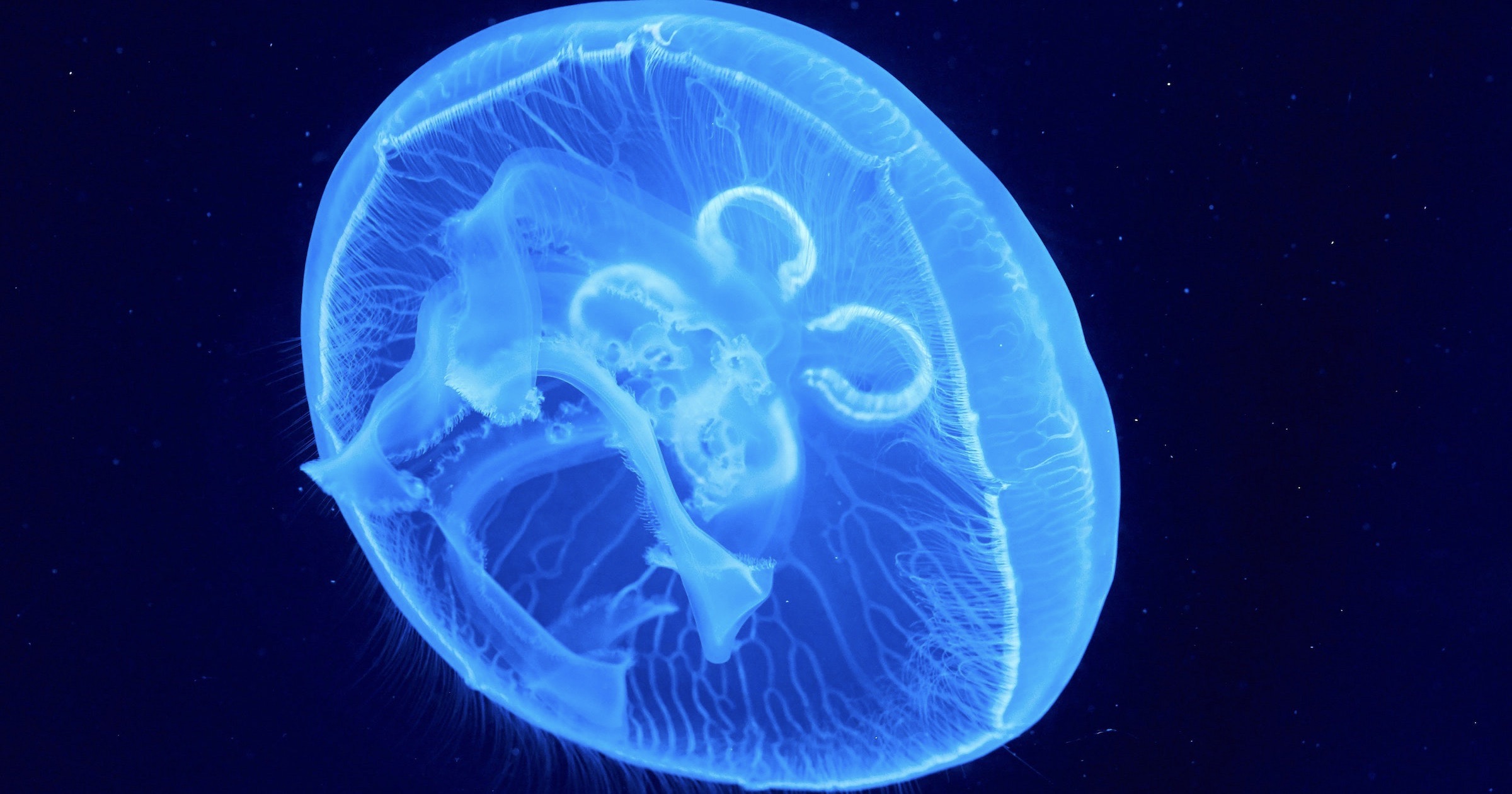 Evolution
Evolution
 Intelligent Design
Intelligent Design
Secrets that Give Sea Lions and Jellyfish Their Edge as Swimmers

The Illustra Media documentary Living Waters focuses on four marine organisms, each worthy of admiration: dolphins, sea turtles, salmon, and humpback whales. But before and after the detailed accounts, scenes of many other swimmers parade across the screen. Can you guess which of them wins the prize for most efficient swimmer? It may not be your first guess. It’s not necessarily the fastest, just the one that gets the most distance per expenditure of energy.
Neelesh Patankar, a mechanical engineer from Northwestern, and John Dabiri, a bioengineer from Caltech, measured the efficiency of a wide variety of organisms. They determined that top prize goes to: the jellyfish. In an article at The Conversation, Akshat Rathi explains why jellyfish “are the most efficient swimmers” in the world. That’s quite a distinction among the many other swimmers that are already at the top of their game:
The new measure has two implications. First, among those that have typical swimming and flying actions, which includes most fish and all birds, each animal is as energy efficient as it can be. This means that, given their size and shape, each animal is able to spend the least amount of energy to move the most distance. Second, this measure confirms a previous finding that jellyfish are unusually energy efficient, beating all the thousands of fish and birds Patankar studied.
“Put another way, a whale and a tuna are equally energy efficient,” Patankar said. “Except jellyfish, which have an unusual action that makes them more efficient.” [Emphasis added.]
What’s the Secret?
Beautiful images of these creatures flash by briefly in the Illustra film. Time did not allow producer Lad Allen to discuss their mechanics, but the subject was considered during the planning stages. We mentioned jellyfish efficiency in an earlier post. What’s the secret that gives jellies the edge?
While working on the energy-consumption coefficient, he came across recent work done by Dabiri and his colleagues which showed that the unique contract-and-relax action of jellyfish allowed it to recapture some of the energy it spends on motion. This means a jellyfish can travel a lot more distance for the same amount of energy spent by other animals adjusted for its weight and size.
The Cambrian Explosion
It’s interesting to note, also, that jellyfish (phylum Cnidaria) are among the phyla that appear abruptly in the Cambrian explosion — see our article where an expert said, “The earliest widely accepted animal fossils are rather modern-looking cnidarians.” Given the high efficiency of these deceptively simple-looking animals, it’s not surprising that engineers are attempting to imitate their secrets. “Dabiri is already working on exploiting jellyfish propulsion,” Rathi says.
There’s another swimmer that might surprise you, this time for its stealth. These graceful animals make cameo appearances at the beginning and end of Living Waters. Phys.org reports:
At a maximum speed of 25 miles per hour, sea lions may not be the fastest-swimming mammal in the sea. But they are unrivaled when it comes to stealth — their signature clap-and-glide flipper motion propels them through water and leaves virtually no wake.
The benefits of turbulence-free motion underwater are obvious. Imagine submarines that glide stealthily beneath sensitive detectors. At George Washington University, mechanical engineers and students are attempting to “build a machine to mimic what sea lions naturally do.”
It wouldn’t be easy to design a system from scratch that could match the sea lion’s specifications — they produce high levels of thrust while leaving little traceable wake structure. So it makes sense to learn as much as we can about how they do it — with the thought that someday we might be able to engineer something that mimics our biological model.
The secret of wake-free swimming appears to be related to the sea lion’s use of its fore-flippers, rather than a tail (as with dolphins and fish). At The Conservation, Megan Leftwich describes in more detail how this mode of locomotion produces more thrust. A video shows how researchers at George Washington University are measuring carefully the flipper motions of California sea lions, mapping them into computer models that can inform the design of artificial flippers. This is an exercise in “Studying Nature’s Solutions,” the title says.
If the world’s best human designers are attempting to build machines to mimic what these animals “naturally do,” it’s a reasonable inference that sea lions and jellyfish originated from an intelligent cause — one with superior knowledge of propulsion, fluid mechanics, and optimization.
This article was originally published in 2015.

